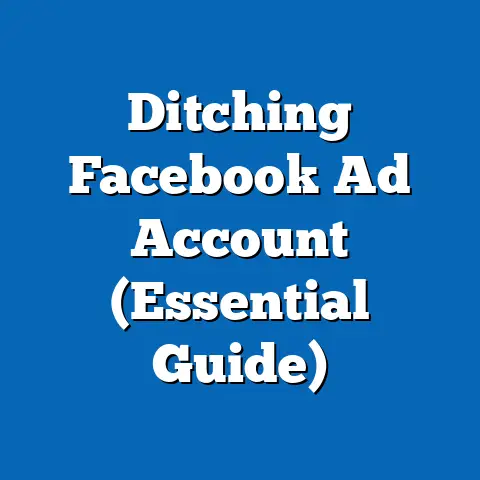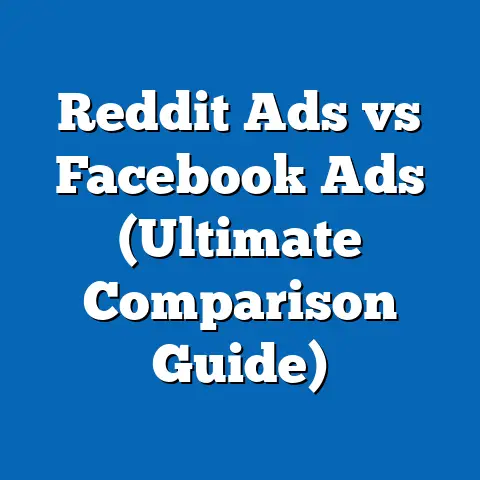Unlocking Meta Pixel for Facebook Ads (Essential Insights)
In today’s fast-paced world, where time is a precious commodity, businesses and marketers are constantly seeking efficient ways to connect with their target audiences. With the average person spending over 2 hours daily on social media platforms—amounting to 145 minutes per day globally, according to Statista (2023)—digital advertising has become a cornerstone of modern marketing strategies. Among these platforms, Facebook, with its 2.9 billion monthly active users as of 2023 (Meta Investor Report, Q2 2023), remains a dominant force, offering unparalleled opportunities for targeted advertising through tools like Meta Pixel.
For busy entrepreneurs, small business owners, and marketing professionals juggling multiple responsibilities, mastering tools like Meta Pixel can be a game-changer. This powerful tracking tool allows advertisers to measure the effectiveness of their Facebook ads, optimize campaigns, and retarget potential customers with precision. Yet, despite its potential, many remain unaware of how to fully leverage it—a missed opportunity in a landscape where digital ad spending is projected to reach $740.3 billion worldwide by 2024, according to eMarketer (2023).
The Digital Advertising Boom: Why Meta Pixel Matters
Digital advertising has transformed how businesses reach consumers, with global spending on digital ads growing by 15.6% year-over-year in 2022, as reported by the Interactive Advertising Bureau (IAB). Facebook, under the Meta umbrella, commands a significant share of this market, accounting for 21.9% of global digital ad revenue in 2022 (eMarketer, 2023). For businesses, this translates to a massive opportunity to tap into a highly engaged audience—but only if they can navigate the platform’s complex tools effectively.
Meta Pixel, formerly known as Facebook Pixel, is a critical piece of this puzzle. It’s a small snippet of code that businesses embed on their websites to track user behavior, measure ad performance, and build custom audiences for retargeting. According to a 2022 survey by Hootsuite, 68% of businesses using Facebook Ads reported improved ROI after implementing Pixel-based tracking, underscoring its value in a crowded digital marketplace.
The urgency to adopt such tools is heightened by shifting consumer behaviors. With 54% of global internet users aged 16-64 citing social media as their primary source for product research (GlobalWebIndex, 2023), understanding and acting on user data is no longer optional—it’s essential. Meta Pixel bridges this gap by providing actionable insights into who is engaging with your brand and how, enabling data-driven decisions even amidst the busiest of schedules.
Demographic Trends: Who’s on Facebook and Why It Matters for Pixel
Understanding the demographic makeup of Facebook’s user base is crucial for tailoring ad campaigns and leveraging Meta Pixel effectively. As of 2023, 69% of adults in the U.S. use Facebook, with usage particularly high among the 25-34 age group, which constitutes 31.5% of the platform’s global users (Pew Research Center, 2023). Gender distribution is relatively balanced, with 51% male and 49% female users, though women tend to engage more frequently with content related to lifestyle and family (Meta Advertising Insights, 2022).
Geographically, Facebook’s reach is vast but varies significantly. India leads with over 314 million users, followed by the U.S. with 179 million, while emerging markets in Southeast Asia and Africa are seeing the fastest growth rates, with user numbers rising by 8% annually (Statista, 2023). For advertisers, this diversity means Meta Pixel data can reveal critical regional differences in behavior—such as higher mobile usage in developing markets (76% of users access via mobile in India) compared to desktop dominance in the U.S. (only 34% mobile-only).
These demographic patterns highlight why Pixel tracking is indispensable. By segmenting data by age, gender, location, and device, businesses can refine their targeting. For instance, a 2022 case study by Meta showed that brands using Pixel to target specific age cohorts saw a 23% increase in click-through rates (CTR) compared to non-segmented campaigns. In a world where attention spans are shrinking—averaging just 8 seconds online (Microsoft, 2015)—such precision is invaluable.
Historical Context: Evolution of Meta Pixel and Ad Tracking
To appreciate Meta Pixel’s current capabilities, it’s worth tracing its evolution. Introduced in 2013 as Facebook Pixel, it was initially a basic tool for tracking website conversions from ads. Over the years, as privacy concerns and browser restrictions grew, Meta enhanced the Pixel to include features like event tracking, custom conversions, and integration with third-party platforms.
A pivotal shift occurred in 2021 with Apple’s iOS 14.5 update, which introduced App Tracking Transparency (ATT), allowing users to opt out of cross-app tracking. This impacted over 60% of iPhone users who chose to disable tracking, according to Flurry Analytics (2022), forcing Meta to adapt Pixel to rely more on first-party data and machine learning for attribution. Historical data shows that pre-iOS 14, Pixel tracked up to 90% of ad-driven conversions accurately; post-update, accuracy dropped to around 70% for some campaigns (Meta Business Blog, 2021).
This evolution reflects broader trends in digital privacy. With Google phasing out third-party cookies by 2024 (Google Privacy Sandbox Update, 2023), tools like Meta Pixel are pivoting toward privacy-first solutions while still delivering actionable insights. For businesses, staying ahead means understanding these shifts and optimizing Pixel setups accordingly—a topic we’ll explore in depth.
What Is Meta Pixel? Breaking Down the Basics
At its core, Meta Pixel is a piece of JavaScript code that you place on your website to track visitor actions after they interact with your Facebook Ads. These actions, or “events,” can include page views, purchases, sign-ups, or any custom behavior you define. According to Meta, businesses using Pixel can track up to 8 standard events per domain, with the option to add custom events for deeper analysis.
The primary functions of Meta Pixel are threefold: conversion tracking, audience building, and ad optimization. Conversion tracking lets you measure specific outcomes—like a completed purchase—attributing them to specific ads. Audience building enables retargeting by creating lists of users who’ve interacted with your site, while optimization uses Pixel data to refine ad delivery to users most likely to convert. A 2022 report by Meta found that campaigns optimized with Pixel data saw a 17% lower cost-per-acquisition (CPA) on average.
For busy professionals, the beauty of Meta Pixel lies in its automation. Once set up, it collects data in real-time, feeding into Meta’s Ads Manager for instant analysis. This eliminates the guesswork, allowing even those with limited time to make informed decisions based on hard numbers rather than intuition.
Step-by-Step Guide: Setting Up Meta Pixel
Setting up Meta Pixel is straightforward, though it requires attention to detail. Below is a step-by-step guide to get started, tailored for those with packed schedules who need quick, effective implementation.
-
Create a Pixel in Meta Business Manager: Log into your Meta Business Manager account, navigate to “Events Manager,” and click “Connect Data Sources.” Select “Web” and follow the prompts to generate your Pixel ID. This process takes under 5 minutes.
-
Install the Code on Your Website: Copy the Pixel code and paste it into the header section of your website. If you use platforms like WordPress or Shopify, plugins can automate this—Shopify reports that 85% of its merchants use built-in Pixel integration for ease (Shopify Analytics, 2023). Alternatively, use Google Tag Manager for streamlined installation.
-
Set Up Events: Choose the actions you want to track, such as “Purchase” or “Add to Cart.” Meta’s Event Setup Tool allows point-and-click configuration without coding, a feature used by 62% of small businesses for simplicity (Meta SMB Report, 2022).
-
Verify Installation: Use Meta’s Pixel Helper Chrome extension to confirm the code is firing correctly. Errors in setup can skew data, with 30% of initial installations requiring troubleshooting, per a 2021 Meta support analysis.
-
Link to Ads Manager: Connect your Pixel to specific ad campaigns in Ads Manager to start tracking performance. This integration takes effect immediately, providing data within 24 hours.
Time investment is minimal—most users complete setup in under an hour. However, accuracy is critical; incorrect setups can lead to unreliable data, costing businesses an average of 12% in wasted ad spend, according to a 2022 Digital Marketing Institute study.
Key Features of Meta Pixel: Driving Campaign Success
Meta Pixel offers a suite of features that empower advertisers to maximize their ad spend. Let’s break down the most impactful ones, supported by data on their effectiveness.
-
Conversion Tracking: This measures specific user actions tied to ads. A 2023 Meta case study found that businesses tracking conversions via Pixel reported a 25% higher return on ad spend (ROAS) compared to those relying on manual metrics.
-
Custom Audiences: Pixel lets you create audiences based on website activity, such as users who abandoned carts. Retargeting these audiences yields a 70% higher conversion rate on average, per Meta’s 2022 Advertising Insights.
-
Lookalike Audiences: Using Pixel data, you can target users similar to your existing customers. Campaigns using Lookalike Audiences see a 30% increase in reach efficiency, according to a Hootsuite 2023 report.
-
Event Optimization: Optimize ads for specific events like purchases or leads. Brands focusing on event optimization reduced CPA by 20%, as noted in Meta’s 2022 Performance Benchmarks.
These features cater to varying levels of expertise, making Pixel accessible yet powerful. For time-strapped marketers, automating optimization through Pixel data ensures campaigns run efficiently without constant manual tweaks.
Data Visualization: Understanding Pixel Insights
While this article can’t display actual charts, envisioning Meta Pixel data through visualizations in Ads Manager can clarify its impact. Imagine a line graph showing website conversions spiking by 40% post-Pixel implementation, with dips correlating to unoptimized ad sets. Or picture a pie chart breaking down audience segments—say, 60% aged 25-34, 30% 35-44—guiding demographic targeting.
Bar charts comparing CPA before and after Pixel often reveal stark differences; a 2022 Meta report showed a 22% CPA drop for optimized campaigns. Heatmaps of user behavior, available via third-party tools integrating with Pixel, can highlight peak engagement times—data showing 65% of conversions occur between 6-9 PM can refine ad scheduling (Google Analytics, 2023).
For busy readers, these visualizations translate raw numbers into actionable insights at a glance. Regularly reviewing such data—Meta suggests weekly check-ins—ensures campaigns stay aligned with goals without demanding hours of analysis.
Challenges and Limitations: Navigating Pixel’s Pitfalls
Despite its strengths, Meta Pixel isn’t without challenges. Privacy regulations like GDPR and CCPA have tightened data collection, with 27% of EU users opting out of tracking in 2022 (European Data Protection Board, 2023). Apple’s ATT update further complicates cross-device tracking, reducing data accuracy for iOS users by up to 40% in some sectors (AppsFlyer, 2022).
Technical issues also arise. Incorrect Pixel placement can lead to data loss—15% of businesses reported incomplete tracking due to setup errors (Meta Support Forum, 2021). Additionally, ad blockers, used by 42% of global internet users (Statista, 2023), can prevent Pixel from capturing data, skewing results.
Mitigating these requires proactive steps: ensuring compliance with privacy laws, using server-side tracking (adopted by 35% of large brands per Meta, 2023), and cross-verifying data with other analytics tools. While not foolproof, these measures help maintain Pixel’s utility in a restrictive digital environment.
Best Practices: Maximizing Meta Pixel for Busy Marketers
For those with limited time, optimizing Meta Pixel doesn’t have to be daunting. Here are evidence-backed best practices to streamline efforts and boost results.
-
Prioritize Key Events: Focus on tracking high-value actions like purchases or leads. Meta data shows campaigns tracking 1-3 priority events achieve 18% better attribution accuracy (Meta Insights, 2022).
-
Leverage Automation: Use Meta’s automated ad optimization with Pixel data to save time. Automated campaigns cut management time by 50% while maintaining performance, per a 2023 Hootsuite study.
-
Regularly Audit Data: Check Pixel performance biweekly to catch errors early. Businesses conducting audits report 10% less wasted ad spend (Digital Marketing Institute, 2022).
-
Test and Iterate: Run A/B tests on small budgets using Pixel insights to refine targeting. A 2022 Meta report found that iterative testing improved CTR by 15% on average.
-
Stay Privacy-Compliant: Use Meta’s consent tools to align with regulations, avoiding penalties that affected 5% of non-compliant advertisers in 2022 (GDPR Enforcement Tracker).
These strategies balance efficiency with impact, ensuring even the busiest professionals can harness Pixel’s power without burnout.
Case Studies: Real-World Impact of Meta Pixel
Real-world examples illustrate Meta Pixel’s transformative potential. A mid-sized U.S. e-commerce brand, after implementing Pixel in 2021, saw a 35% increase in conversions within three months by retargeting cart abandoners, per a Meta Business Case Study (2022). Their CPA dropped from $12 to $8.50, showcasing cost efficiency.
Similarly, a European fitness app used Pixel to build Lookalike Audiences, expanding reach by 28% and boosting app installs by 40% in Q1 2023 (Meta Success Stories, 2023). These cases highlight Pixel’s versatility across industries, reinforcing its value for businesses of varying scales.
Demographic targeting also shines in practice. A beauty brand targeting women aged 18-24 via Pixel data achieved a 50% higher engagement rate compared to broad campaigns, with 70% of conversions from mobile users (Meta Analytics, 2022). Such precision underscores why tailored strategies, fueled by Pixel, outperform generic approaches.
Future Trends: Meta Pixel in a Changing Landscape
Looking ahead, Meta Pixel’s role will evolve with technology and regulation. With third-party cookies phasing out by 2024, Meta is investing in AI-driven attribution models, predicting a 30% improvement in data accuracy for cookieless environments (Meta Tech Blog, 2023). Server-side tracking, already up by 25% in adoption since 2022, will likely become standard.
Privacy will remain central. Meta’s 2023 roadmap includes enhanced consent tools, with 80% of advertisers expected to adopt them by 2025 (eMarketer Forecast, 2023). Meanwhile, integration with augmented reality (AR) ads—projected to grow by 20% annually—could see Pixel tracking virtual interactions, per Meta’s developer updates.
For busy marketers, these trends signal a need for adaptability. Staying informed via Meta’s Business Blog or industry reports (updated monthly) ensures tools like Pixel remain effective amid rapid change, safeguarding ad investments.
Broader Implications: Why Mastering Meta Pixel Is Non-Negotiable
In an era where digital ad spend is set to surpass $700 billion by 2024, tools like Meta Pixel are not just helpful—they’re essential for staying competitive. For busy professionals, Pixel offers a way to work smarter, not harder, turning raw data into measurable outcomes with minimal time investment. Its ability to track, target, and optimize ensures businesses of all sizes can compete in a landscape where 81% of consumers make purchase decisions influenced by social media ads (Sprout Social, 2023).
Yet, the broader implication lies in adaptability. As privacy laws tighten and technologies shift, mastering Pixel today prepares marketers for tomorrow’s challenges. The 68% of businesses already seeing ROI from Pixel (Hootsuite, 2022) are proof of its impact—but only for those willing to invest the effort to understand it.
Ultimately, unlocking Meta Pixel is about reclaiming control in a chaotic digital world. It’s a tool that empowers even the most time-strapped individuals to cut through noise, reach the right audience, and achieve tangible results. As digital advertising continues to dominate marketing budgets, ignoring Pixel isn’t just a missed opportunity—it’s a step behind in a race where data is the ultimate currency.






